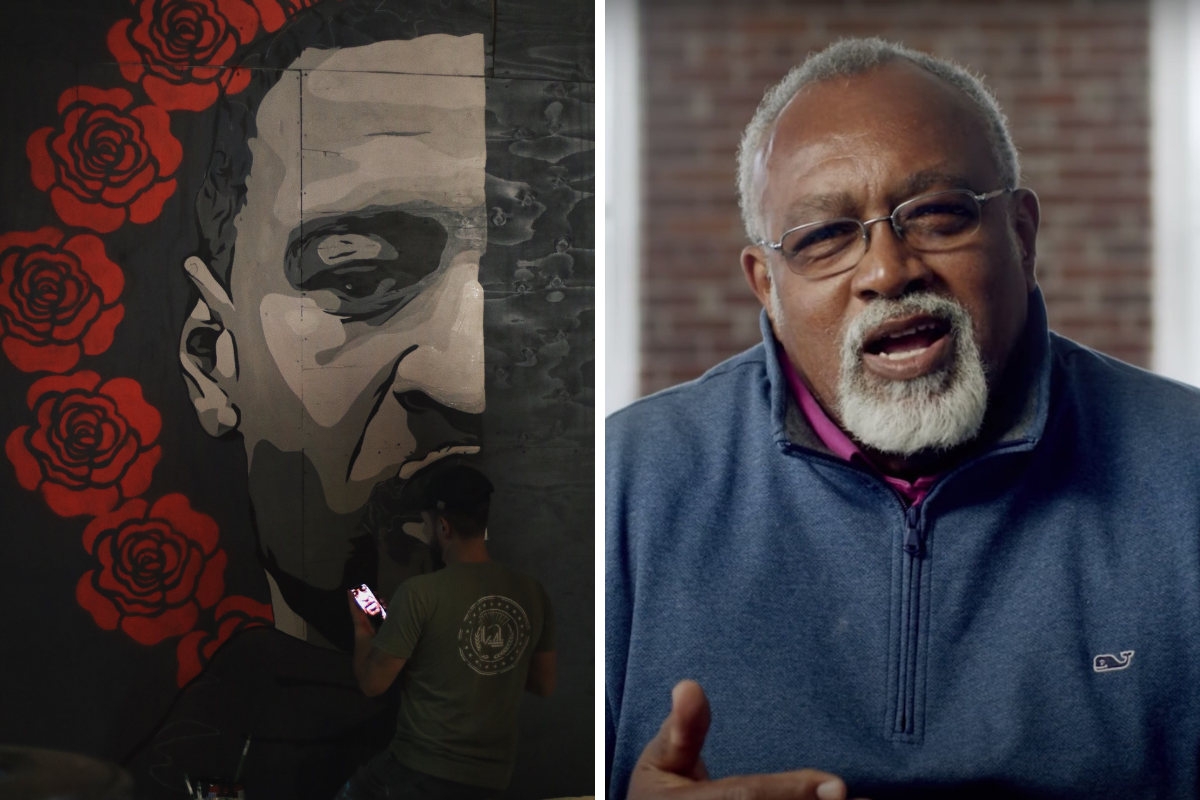
When was the last time you heard good news about the state of black America? Given the way the topic is reported in the media, you could be forgiven for not remembering. Most will be familiar with the standard portrayal: black people are disproportionately poor, incarcerated, born into single-parent homes, and harassed by cops. There’s the test score gap, which places black kids at a disadvantage when applying to college; the school-to-prison pipeline, which prepares black boys for prison by punishing them disproportionately in school; and the racial wealth gap, which won’t close for several centuries if current trends continue.
In an era when bipartisan agreement is scarce, the Left and the Right seem to be united in their somber assessment of black America, though they locate the blame in different places. Democrats tend to blame systemic racism and the legacy of white supremacy. Republicans, on the other hand, tend to blame Democrats. Recall President Trump’s infamous appeal for the black vote: “You’re living in poverty. Your schools are no good. You have no jobs,” he maintained, blaming the Clintons for these circumstances. “What the hell do you have to lose?”
The narrative of doom and gloom, however, is misleading. Though it has gone largely unnoticed, black Americans have been making rapid progress along most important dimensions of well-being since the turn of the millennium.

Let’s start with incarceration. Without doubt, there is plenty of reason to be pessimistic about the U.S. prison system. America incarcerates a larger proportion of its citizens than any nation on earth. Black Americans, at 13 percent of the U.S. population, made up one-third of the nation’s incarcerated population in 2017. To make matters worse, conditions inside many prisons are ill-suited for rehabilitation. Alabama’s state prisons, for instance, are so rife with violence and sexual assault that Trump’s Justice Department has charged them with violating the eighth amendment to the constitution, which bans “cruel and unusual punishments.”
Nevertheless, there are reasons to be optimistic. From 2001 to 2017, the incarceration rate for black men declined by 34 percent. Even this statistic, however, understates progress by lumping black Americans of all ages together. When you look at age-specific incarceration outcomes, you find two opposing trends: Older black Americans are doing slightly worse than previous generations, but younger black Americans are doing better—so much better that they more than offset, in statistical terms, the backslide of their elders. To put the speed and size of the trend in perspective, between my first day of Kindergarten in 2001 and my first legal drink in 2017, the incarceration rate for black men aged 25–29, 20–24, and 18–19 declined, respectively, by 56 percent, 60 percent, and 72 percent. For young black women, the story is similar: a 59 percent drop for those aged 25–29, a 43 percent drop for those aged 20–24, and a 69 percent drop for those aged 18–19.
As a result of the divergent generational trendlines, the black prison population is not only shrinking; it’s aging too. In 2017, nearly three in ten black male prisoners were 45 years of age or older, up from one in ten in 2001. That may not seem like good news, but it is. The incarceration trendline for young blacks in the recent past predicts the trendline for all blacks in the near future. So the fact that the post-2001 incarceration decline for blacks in general was entirely caused by the plunging incarceration rate for young blacks in particular suggests that, as generational turnover occurs, the black prison population will not only continue to shrink, but will shrink at an accelerating rate. To paraphrase the economist Rick Nevin, our prison system may be overflowing today, but the “pipeline” to prison is already starting to run dry.
The great incarceration decline for black youth has been matched by a decline in teenage motherhood. Between 2001 and 2017, the birth rate for black women aged 15–19 declined by 63 percent. In fact, the black teenage birth rate in 2017 was lower than the white teenage rate as recently as 2002.
Nor has progress been confined to the younger generation. Between 1999 and 2015, the mortality rate for black Americans aged 65 and over shrank by 29 percent for cancer, 31 percent for diabetes, and 43 percent for heart disease. What’s more, all of those percentage drops were larger than the drops experienced by comparable whites over the same period. As deaths from disease have plummeted, black lives have extended. In 2017, black female life expectancy was 78.5 years, up from 75.1 years in 2000. Life expectancy for black men increased from 68.2 to 71.9 years over the same timespan.
Not only are black Americans healthier and longer-lived than they were two decades ago, they’re also more educated. Between the 1999–2000 and 2016–2017 school years, the number of black students who earned bachelor’s degrees increased by 82 percent, from 108,018 to 196,300. Over the same period, the number of associate’s and master’s degrees awarded to black students more than doubled, rising from 60,208 to 129,874, and 36,606 to 89,577, respectively (population growth accounts for some, but not all or even most, of this growth). 2018 census data showed that 37 percent of black Americans aged 25–34 had some kind of college degree. If black America were its own country, that would place it in between Germany (31 percent) and Spain (43 percent) in terms of educational attainment. What’s more, the economist Raj Chetty has found that black women, though less likely to attend college than white women, are now more likely to attend college than white men from similar socioeconomic backgrounds.

Along with more education has come more upward mobility. The Federal Reserve recently reported that over 60 percent of blacks at every level of educational attainment say they’re doing better financially than their parents—a higher percentage than either whites or Hispanics. And although black men still lag behind white men in terms of upward mobility, Chetty has found that black women now go on to earn slightly higher incomes than white women from similar socioeconomic backgrounds.
All told, there is more than enough data with which to tell an optimistic story about the recent history of black America. However, the same data that justify this optimism can appear to justify pessimism if you look at it differently. Recall, for instance, the 72 percent drop in the incarceration rate for black men aged 18–19 from 2001 to 2017. Framed as such, it looks like progress. But here’s the same data framed differently: In 2001, black men aged 18–19 were nine times more likely to be behind bars than comparable white men. By 2017, they were twelve times more likely to be behind bars. Framed as such, it looks like regress.
This particular framing effect is just one example in a larger pattern: The evidence against racial progress tends to compare black-white gaps today to black-white gaps in the past. Here, white metrics are used as benchmarks against which to measure black progress. By contrast, the evidence in favor of progress tends to compare black metrics today against black metrics in the past. White metrics do not enter the equation. Crucially, the same data can often be made to look like either progress or regress depending on which framework is chosen.
The question of black progress, therefore, is less a matter of weighing the reality of progress against the reality of regress than it is a matter of looking at the same reality through two different lenses. Through one lens, progress means reducing the size of black-white racial gaps; let’s call this the gap-lens. But through another lens, progress means improving black outcomes relative to where they were in the past; let’s call this the past-lens.
The rationale for choosing the gap-lens is this: if not for our racist history, the racial gaps we observe today would not exist. That history includes not only two and a half centuries of chattel slavery, but also the many and varied Jim Crow era policies, from school segregation to redlining, that prevented blacks from taking advantage of the American dream. To measure the width of a racial gap, this view holds, is to measure the depth of America’s failure to redress that history. What’s more, if we fail to close statistical gaps between blacks and whites, then we would be surrendering ourselves to live in a permanently racially-stratified society, a society in which—even if everyone were doing better than their parents—whites would hold more economic power than blacks in perpetuity.
Though the rationale behind it is powerful, the gap-lens, taken to its logical end, borders on the absurd. Imagine we had a button that doubled the amount of everything good for each racial group and halved the rate of everything bad—so, black wealth doubles, white wealth doubles, black incarceration is halved, white incarceration is halved, and so on. As we pressed the button repeatedly, America would increasingly approach utopia. Yet the racial gaps—that is, the ratios between black and white outcomes—would remain unchanged. Therefore, viewed through the gap-lens, we will have made no progress at all. Indeed, any amount of black progress can become invisible when viewed through the gap-lens, given sufficient white progress. That’s a problem. A framework for progress that, under certain conditions, would not recognize the difference between our current world and a quasi-utopia seems, frankly, to miss the point of the word.
The gap-lens also relies on the dubious presumption that white outcomes are the best benchmark against which to measure black outcomes. One reason this presumption fails is that the median white American is a full decade older than the median black American. Thus, comparing all blacks to all whites on any outcome that varies with age—for instance, incarceration or wealth—is comparing apples to oranges.
More importantly, when we compare black outcomes to white outcomes and blame all of the gaps on institutional racism, we treat American society as if it were a simple 8th-grade science experiment: white people are treated as the “control group”; black people are treated as the “experimental group”; and the “independent variable,” applied only to blacks, is institutional racism. On this oversimplified paradigm, we could reasonably assume that all racial outcome gaps are caused by institutional racism. But reality is more complex. Black Americans and white Americans are unique groups of people with different histories, different demographics, and different sociological characteristics. Such confounding variables make it overly simplistic to pin all racial gaps on institutional racism.
Despite such flaws, the gap-lens is the default lens through which many scholars and journalists view black America today. Whether it’s wealth, incarceration, or education, the habit of framing black metrics relative to white metrics is so deeply ingrained that it seems naïve to observe that we do not view other racial groups this way. Which is to say, when we ask whether white Americans have made progress, we compare whites not against some other group but against themselves at an earlier point in time. Why, then, do we treat the analysis of black America differently?
For many, the answer lies in history. It makes sense to analyze black America with a unique lens precisely because black Americans trail a unique history of oppression. There is no way to acknowledge that ugly history, in this view, without looking directly at the gaps caused by it.
I understand this rationale, and have some sympathy with it. However, it ignores the downsides associated with focusing on racial gaps. There is a spectrum of possible outcomes in multi-ethnic societies with violent, segregated conflict at one end, and peaceful, integrated cooperation at the other. Somewhere in between lies a circumstance, neither disastrous nor ideal, in which members of different racial groups are encouraged to measure themselves against one another, generating racial envy and resentment. Americans in general, and black Americans in particular, currently exist in such a circumstance. Yet because it is the water in which we swim, it is difficult to recognize that such racial tensions are not the inevitable consequence of living in a racially disparate society.
It is easier to see the role played by the commentariat in generating racial tensions by looking at situations in which such tensions were absent. For example, in his essay, “The Politics of a Multiethnic Society,” the late Harvard sociologist Nathan Glazer made the following observation about European immigrant groups in the American Northeast:
If these groups had analyzed the statistics, they might have found much to grouse about. Since the Irish dominated electoral politics, all other groups were by that token “deprived.” Since the Jews were the most successful in terms of high occupational status, all the others were by that token “deprived.” Yet that is not the way the political debate went, and all the European ethnic groups believed they had done well in America, and there is scarcely a one that bears grievances.
The key observation in Glazer’s analysis is not that these ethnic groups were successful (though they were), but that they believed they were successful. Implied in that observation is the idea that a group of people can be doing quite well but can nevertheless be made to believe the opposite—so long as they are habitually compared to other groups in the media. It’s a truism that a single person suffers when he measures himself by the yardstick of another, particularly when the other person had various advantages and head starts that he lacked. In a similar way, by forever measuring blacks against an improper yardstick, the gap-lens, though intended as a way of acknowledging the unique history of oppression blacks have endured, in effect punishes them twice for it.
To be sure, there are circumstances in which it makes sense to define progress in terms of closing racial gaps. For instance, having political leaders who reflect the population in terms of race and ethnicity is, everything else held equal, good for the social fabric of a multi-ethnic society. To that end, I’m not arguing that we should abolish the use of the gap-lens in every case. I’m arguing that, in the great majority of cases, the past-lens yields a more useful picture of the state of black America. Which is to say, black progress can be understood independent of white progress and celebrated on its own terms.

What do we gain by acknowledging progress? For one thing, ignorance of how much progress blacks have made in recent years leads many to mistakenly believe American institutions are so racist that nothing short of complete overhaul would suffice to repair them. The fact that those very same institutions have allowed for, if not ushered in, huge amounts of progress for black people in recent years suggests a more sober-minded approach. We should not burn the system down. We should reform it one increment at a time.
More importantly, if we want to continue making progress, then we must understand the root causes of progress, and in order to understand its root causes, we must first acknowledge that progress has happened. In recent decades, black Americans have been progressing, sometimes rapidly, along virtually every dimension worth caring about. And, without becoming complacent, we can be cautiously optimistic that such progress will continue. A complete conversation about race and racial inequality must involve not just identifying what goes wrong, but also what goes right—for if we fail to learn from the triumphs of our own recent past, we are doomed not to repeat them.







